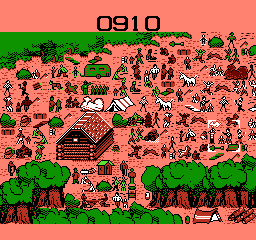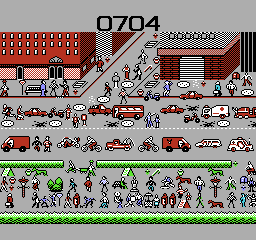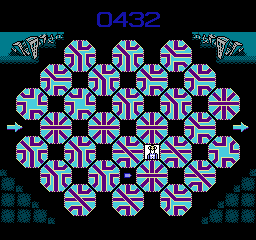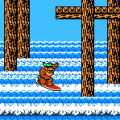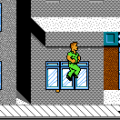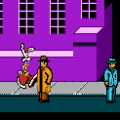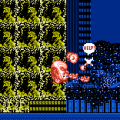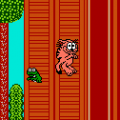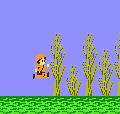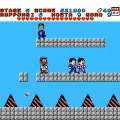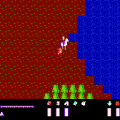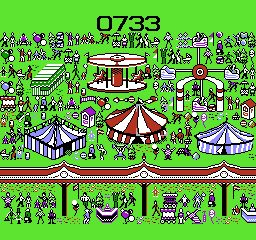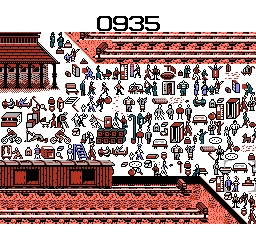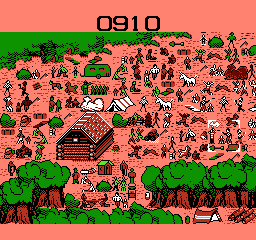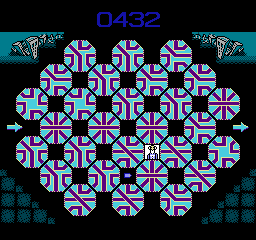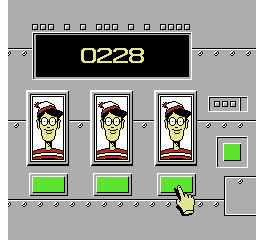Martin Handford’s Where’s Waldo? series (or Where’s Wally? as it’s known outside of North America) was likely a staple of your childhood. The picture book series presents incredibly elaborate scenes which give you the goal of finding the bespectacled Waldo in his trademark red-and-white striped shirt and hat. Later books added other people and objects to find in addition to Waldo, and since it began in 1987, it is still seeing the release of books and merchandise to this very day. It’s not hard to understand why, as each book is fun for all ages and warrants respect for the insane amount of detail on each double-page spread, depicting gargantuan crowds of people in various locales, events, and time periods. It’s not easy finding Waldo on a public beach, amongst a medieval castle siege, during the California Gold rush, or most ridiculously, hidden in a crowd of Waldo impersonators! With the series’ fame, it would be inevitable that video games would be based off of it… and fame does indeed come with a price. The cost for Where’s Waldo being so awesome is having a horrible NES game besmirching its name.
Waldo wants to go to the Moon for some undisclosed reason, and somehow, you detecting him through various locations helps him along to this destination. You need to find him at a train station, a forest, a fairground, and other fairly generic places. You’re given four difficulty settings, where the easiest, “practice,” keeps you from playing past the third level, like that’s any big loss. You’re given a set amount of time to complete the game which decreases on higher levels, and tougher difficulties also require you to scroll off the screen to reveal more of the enlarged playfield. All you need to do for the majority of stages is guide a cursor (which is smaller on higher difficulties) and press A when you find what you think if Waldo. If you’re wrong, you get a slight time penalty, and if right, you’re “rewarded” with the next stage. However, the images depicting a typical Waldo scene are horribly wrong. They completely miss any semblance of detail from Handford’s style and are just depicted as faceless stick figures that aren’t doing anything interesting over a bland landscape. While small and lacking his glasses (or a face to hold them on), it usually doesn’t take very much effort to find Waldo in spite of the poor graphics, and the game is meant to just be beaten in a few minutes. The crappy visuals may just be the result of the NES’ low-tech power, which makes one wonder why anyone bothered to fit it in the first place.
However, it gets even worse with the three “minigame” levels: Cave, Subway, and Rocket. In the cave, almost everything is dark but Waldo, who uses the enlarged sprite that actually resembles him on the pointless map screen, and he periodically appears out of nowhere to quickly run around before disappearing after a second. You have to try and “catch” him with the cursor, which inexplicably puts you in control of him as you guide him to the exit. There’s no good way to catch Waldo except to hope that he walks into your cursor, which is a total crapshoot. The subway forces you to navigate a hub full of tunnels and find Waldo and his glasses before reaching the exit. This is probably where most of your time will be wasted, and what’s worse is that some old fart (which might be the good Wizard Whitebeard even though it looks almost nothing like him) rapidly takes away your time if you land on him until he disappears. Your game will very likely be lost if you linger on him for more than a split second, and he keeps shifting around the board. The last challenge is the rocket stage, where you have to line up three Waldo pictures on a… slot machine? The determining factor as to whether you win or lose the entire game comes down to a slot machine?! While you can time each panel if your eyes are observant enough, there’s no adequate reason why you should have to do this in a game based on a series where all you need to do is find Waldo. The stages which try to do this are terrible enough, but these mandatory minigames are even farther removed from this concept and mutate the whole package from “bad adaptation” to “absolute mess.”
Where’s Waldo is much better off as a book, but there have been a few other video games which, while no great shakes, at least conveyed the original idea with more accuracy. The NES game is so reprehensible that one has to wonder how it received the “official Nintendo seal of quality.” Perhaps it’s a forgery by Odlaw, Waldo’s nemesis. Two stinging zingers push this game’s kusoge factor up beyond the maxim, with one being its release date of 1991. The graphics look like a low-budget early generation release at best, but to be released during the same year of the Super Nintendo’s North American debut just makes its visuals seem even more pathetic. The other peculiarity to note is that this game was made by Bethesda Softworks. Yes, the very same Bethesda of Elder Scrolls and later Fallout fame. This is perhaps a greater shame than Atlus having developed the NES Friday the 13th game. That game was vaguely playable, but this one is red and white and crap all over.
